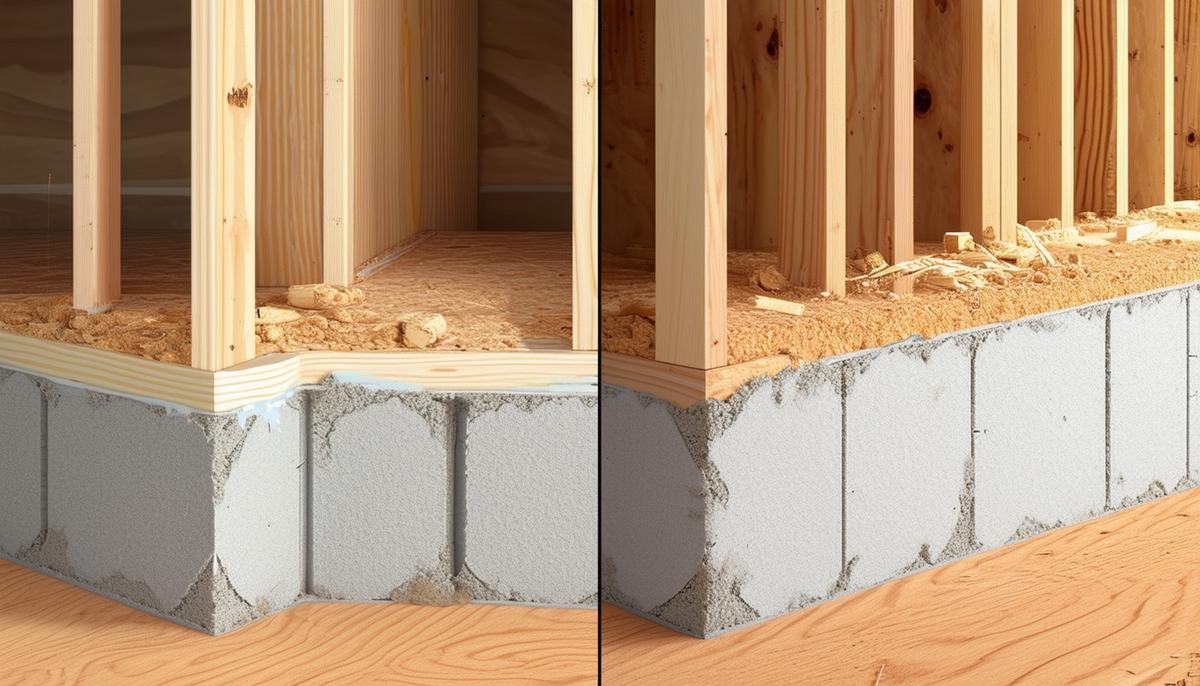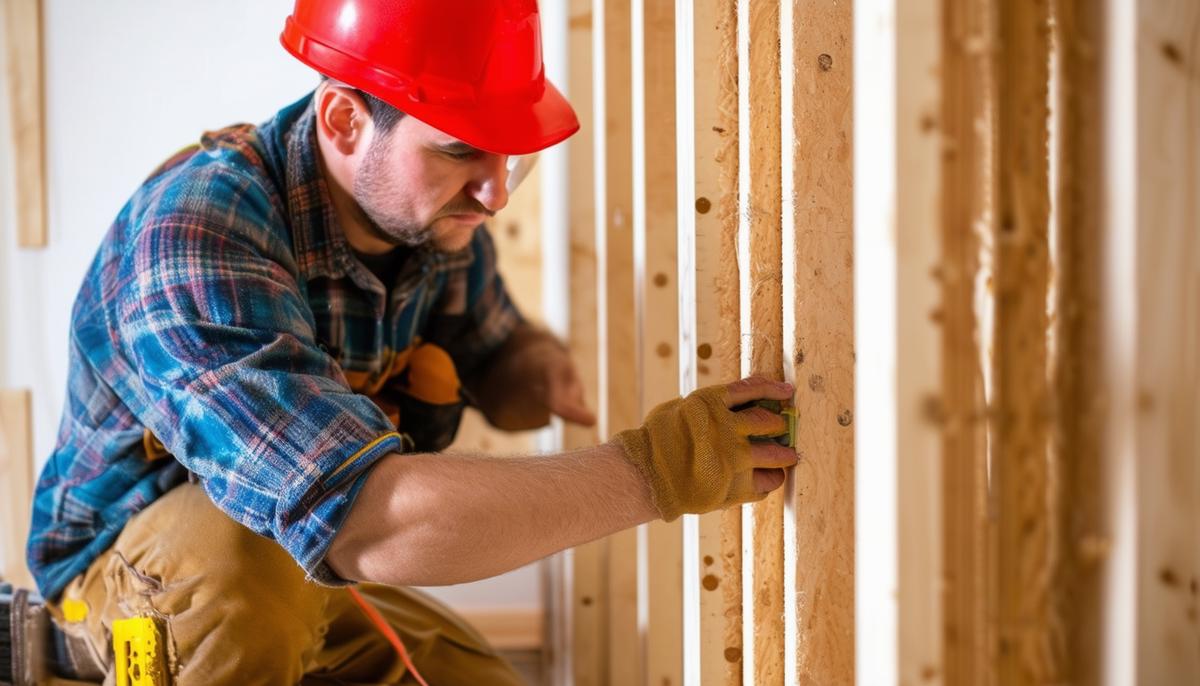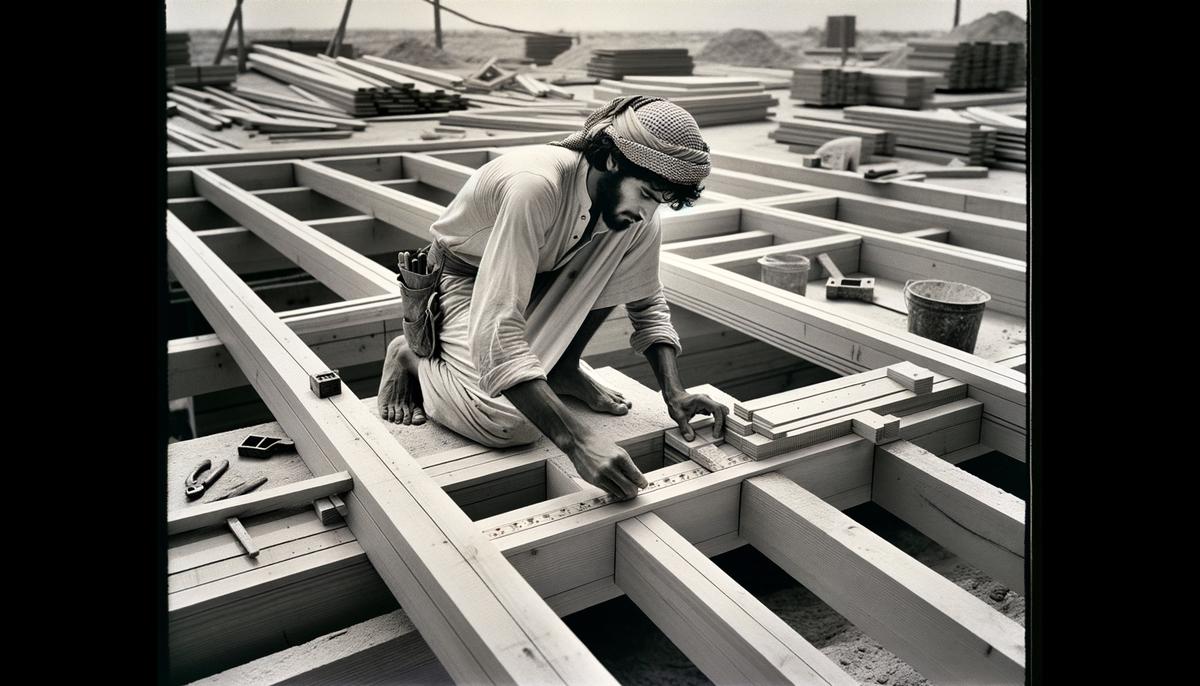Advanced framing techniques offer practical solutions to common construction challenges. These methods streamline the building process, enhance energy efficiency, and reduce material costs. By adopting these innovative approaches, builders can achieve better thermal performance and contribute to more sustainable practices.
1. Advanced Framing Wall Corners
Advanced framing wall corners play a key role in modern construction. Traditional three- or four-stud corners create isolated cavities that make insulation challenging and often leave parts of the wall poorly insulated. Modern methods such as insulated three-stud corners or two-stud corners with ladder blocking change that. These approaches provide more space for full cavity insulation, enhancing energy efficiency.
This technique uses fewer studs, reducing material costs and simplifying construction. It also makes insulation installation easier, resulting in better thermal performance and increased wall R-values.
For builders, the reduced use of material cuts down costs, speeds up build times, and reduces waste. This method is a shift toward smarter, more efficient building practices.
Adopting advanced framing for wall corners means using California corners or similar methods to benefit from easier insulation and better thermal performance. It's a straightforward change that leads to significant improvements in the energy efficiency and integrity of the entire structure.

2. Spacing Members 24 Inches On Center
Shifting to a 24-inch spacing for studs, floor joists, and roof rafters is a significant improvement in modern framing methods. Traditionally, framing members are spaced 16 inches on center, which requires more lumber and results in smaller insulation cavities. By increasing the spacing to 24 inches, you reduce the amount of wood needed and create larger cavities for insulation, improving your building's energy efficiency.
This method enhances the whole-wall R-value, leading to better thermal performance, lower energy costs, and a more comfortable living space. The larger cavities allow for more insulation material, which can help in achieving higher energy efficiency standards.
- Simplifies work for other trades
- Cuts down on lumber costs
- Reduces waste
- Leads to faster construction times
- Improves thermal performance
In short, spacing members 24 inches on center is a smart, efficient way to build. It offers numerous benefits, from improved thermal performance and lower material costs to easier installations for other trades and faster build times.

3. Ladder Junction Tee Intersections
Advanced framing ladder junctions at wall intersections minimize the amount of blocking material required. This method allows for more insulation space, reduces thermal bridging and waste, and simplifies drywall installation.
With ladder junctions, 2x blocking is placed at vertical intervals along the corners, effectively connecting intersecting walls with less material. This results in fewer cold spots and makes it easier to attain a higher wall R-value since you can fill these spaces with more insulation.
"Ladder junctions streamline the drywall installation process. Traditional methods require more cutting and fitting to work around unnecessary blocking, which can be time-consuming. Ladder junctions create a smoother surface for drywall installation, saving time and reducing the potential for errors and gaps."
This approach translates to cost savings in multiple ways:
- Materials cost less due to fewer pieces of wood
- Labor costs are lower due to time saved on framing and drywall installation
- Operational costs decrease as increased insulation slows heat loss
Using ladder junctions contributes to more sustainable building practices by minimizing waste and optimizing material usage.
Switching to advanced framing ladder junctions may require some retraining for your crew, but the long-term benefits make it worthwhile. You'll save on costs, speed up build times, and create more energy-efficient buildings.

4. Single Top Plate/In-Line Framing
Using a single top plate with in-line framing members optimizes material usage and improves energy efficiency. This method aligns vertical framing members—studs, floor joists, and roof rafters—directly on top of each other, creating an efficient load path.
A key benefit is the reduction in lumber use. Eliminating the second top plate saves money on materials without compromising structural integrity. This streamlined approach makes construction more straightforward and faster.
When framing members are in line, forces transfer directly downward, creating more efficient load distribution. This also simplifies required structural connections for areas prone to high winds, earthquakes, or heavy snow loads.
The increase in insulation space is significant. A single top plate allows more room to fill walls with insulation, resulting in better thermal performance. This means lower utility bills and a more comfortable living environment. The reduction in thermal bridging further contributes to energy efficiency.
Single top plate/in-line framing offers additional benefits during the installation of plumbing and electrical systems. With aligned and spaced framing members, there are fewer obstacles for workers to navigate.
This method also allows for easier future modifications. Consistent spacing and load paths simplify the process of adding or changing wiring, plumbing, or removing wall sections.
In summary, single top plate/in-line framing is a resourceful practice that optimizes labor and materials. It contributes to better thermal performance, simplifies construction and later modifications, and supports sustainable building practices.

5. Insulated Headers
Insulated headers are a key advancement in framing techniques. Unlike traditional headers built with multiple plies of lumber, insulated headers incorporate insulation cavities while effectively carrying necessary loads.
The main benefit is improved energy efficiency. By including insulation within the header, you can significantly reduce heat loss that typically occurs through solid wood headers. This results in better thermal performance, lower utility bills, and a more comfortable living environment.
Installing these headers in single plies offers several advantages:
- Reduces the amount of wood needed, saving on material costs
- Simplifies the building process
- Optimizes labor and shortens build times
Insulated headers utilize materials more effectively. They're sized precisely for the loads they carry, ensuring structural integrity without excess wood. Wood structural panel box headers, for example, can be built using standard 15/32 Performance Category panels over minimal 2×4 framing, providing ample cavity space for insulation without compromising strength.
By reducing thermal bridging, insulated headers make your entire building envelope more efficient. This aligns with green building standards such as LEED for Homes and the National Green Building Standard, reflecting a commitment to sustainable practices.
Embracing insulated headers brings substantial benefits. The cost savings, energy efficiency gains, and streamlined construction process make it a smart choice for any modern builder. It's a straightforward upgrade with long-lasting rewards, from financial savings to environmental impact.

- National Association of Home Builders Research Center. Optimum Value Engineering (OVE) Framing Techniques. NAHB, 2002.
- U.S. Department of Energy. Advanced House Framing. Energy Saver, 2021.
- APA – The Engineered Wood Association. Advanced Framing Construction Guide. APA, 2020.
- American Wood Council. Wood Frame Construction Manual for One- and Two-Family Dwellings. AWC, 2018.
- International Code Council. International Residential Code. ICC, 2021.
